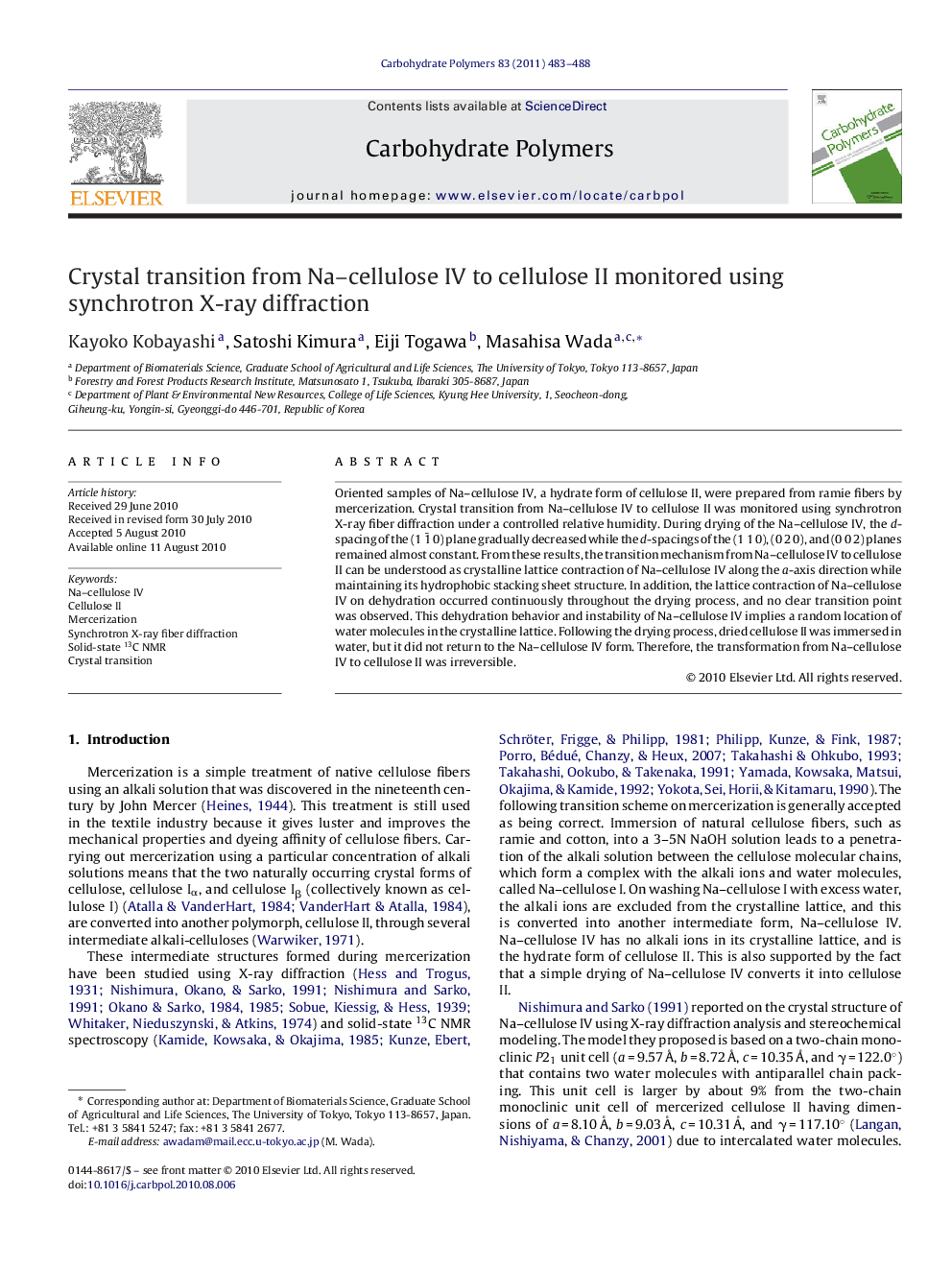| Article ID | Journal | Published Year | Pages | File Type |
|---|---|---|---|---|
| 1387045 | Carbohydrate Polymers | 2011 | 6 Pages |
Oriented samples of Na–cellulose IV, a hydrate form of cellulose II, were prepared from ramie fibers by mercerization. Crystal transition from Na–cellulose IV to cellulose II was monitored using synchrotron X-ray fiber diffraction under a controlled relative humidity. During drying of the Na–cellulose IV, the d -spacing of the (1 1¯ 0) plane gradually decreased while the d-spacings of the (1 1 0), (0 2 0), and (0 0 2) planes remained almost constant. From these results, the transition mechanism from Na–cellulose IV to cellulose II can be understood as crystalline lattice contraction of Na–cellulose IV along the a-axis direction while maintaining its hydrophobic stacking sheet structure. In addition, the lattice contraction of Na–cellulose IV on dehydration occurred continuously throughout the drying process, and no clear transition point was observed. This dehydration behavior and instability of Na–cellulose IV implies a random location of water molecules in the crystalline lattice. Following the drying process, dried cellulose II was immersed in water, but it did not return to the Na–cellulose IV form. Therefore, the transformation from Na–cellulose IV to cellulose II was irreversible.
